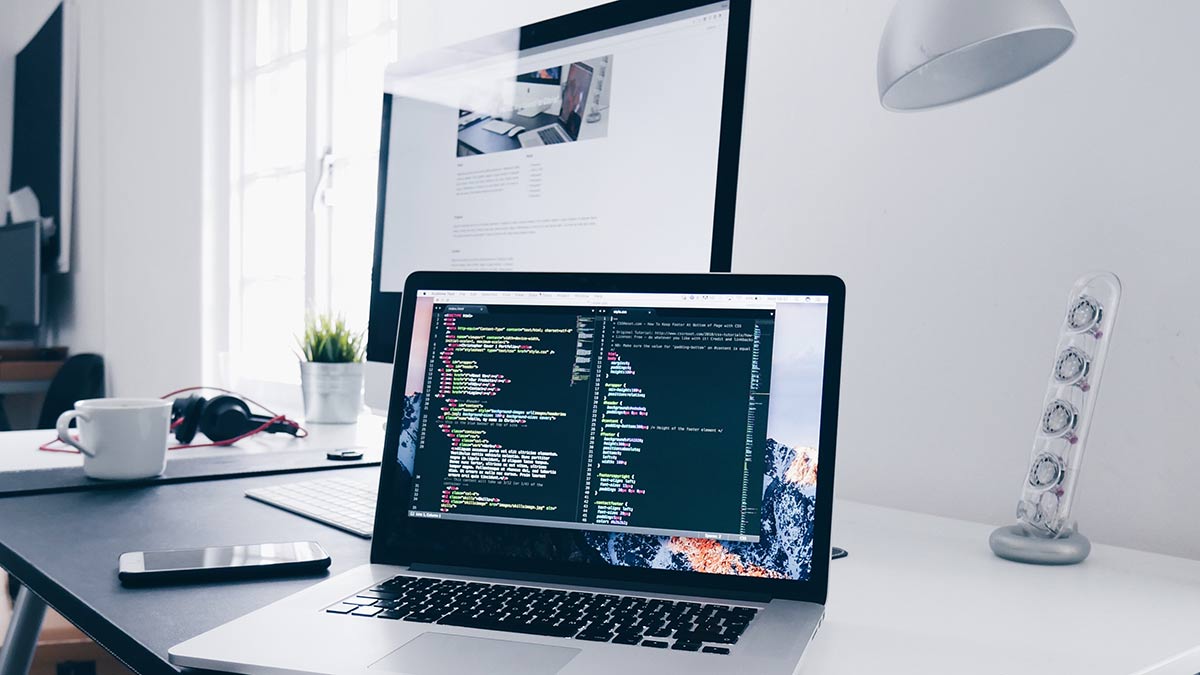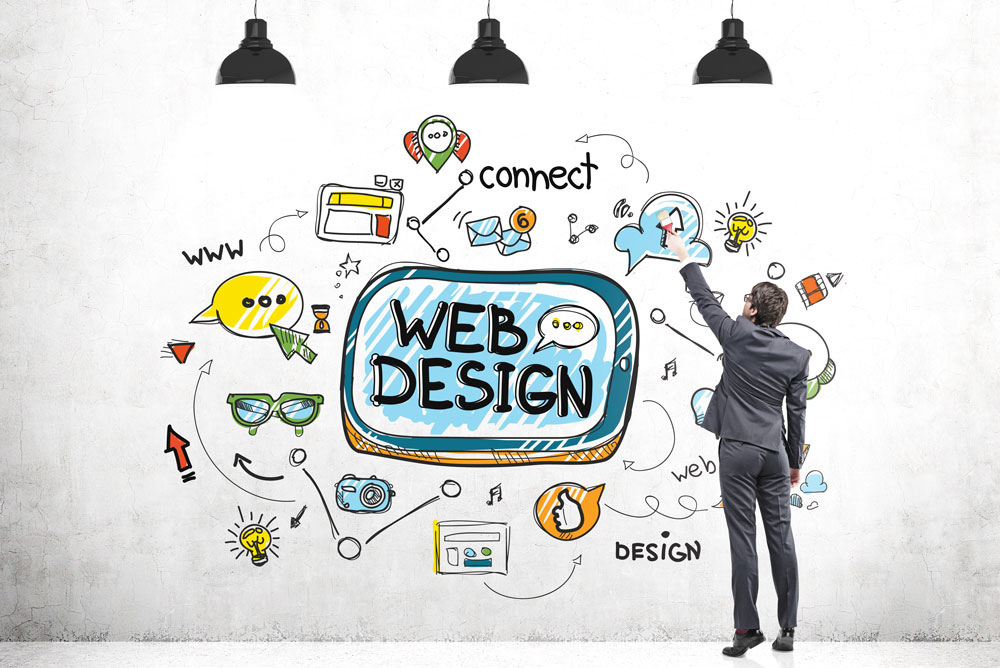Crucial Element to Consider When Crafting Professional Web Design
The Comprehensive Overview to Crafting Visually Appealing and Useful Website Design That Fulfills Individual Demands
In today's digital landscape, the importance of crafting internet designs that are both useful and aesthetically enticing can not be overstated. By prioritizing user-centered design principles, developers can develop experiences that not only bring in yet additionally preserve individual passion - web design.
Recognizing User-Centered Design
At the heart of reliable website design exists the concept of user-centered style, a viewpoint that focuses on the needs, preferences, and habits of individuals throughout the development process. This strategy includes comprehensive research to recognize the target market, ensuring that the end product resonates with its desired users. By incorporating individual comments at every stage, developers can develop user interfaces that are not just visually appealing but user-friendly and likewise useful.
User-centered design highlights compassion, needing designers to tip into the customers' shoes and consider their point of views. Strategies such as individual identities, journey mapping, and usability screening are utilized to determine discomfort factors and chances for improvement. This iterative procedure enables for continuous refinement, as designers adjust to evolving user demands and technological developments.
Including user-centered design brings about increased individual contentment and engagement, eventually resulting in greater conversion prices and brand name loyalty. It promotes a collaborative environment where stakeholders, consisting of individuals, designers, and developers, interact to attain a shared vision. By positioning individuals at the center of the design process, companies can develop sites that not only satisfy business purposes however also provide satisfying and significant experiences for individuals.
Key Concepts of Visual Layout
Efficient aesthetic style works as the structure for developing engaging and straightforward websites. It includes numerous crucial concepts that lead developers in crafting cosmetically pleasing and useful interfaces.
First, equilibrium plays an essential role in achieving aesthetic consistency. Developers need to distribute elements evenly across the design to prevent overwhelming customers. This can be accomplished through balanced or unbalanced style strategies.
Next, comparison enhances readability and accentuates essential components. By utilizing differing sizes, forms, or shades, developers can create centerpieces that assist users through the web content.
Furthermore, alignment is essential for organizing info. Constant placement of text and photos cultivates a tidy format, boosting general navigating and individual experience.
Distance additionally contributes to visual clarity. Grouping relevant products together aids individuals in recognizing the partnership in between various components, making the interface much more user-friendly.
Last but not least, uniformity in design elements, such as shades, styles, and fonts, reinforces brand identity and aids individuals browse the site a lot more easily. By incorporating these vital concepts of aesthetic layout, internet designers can develop interfaces that are not just visually attractive yet user-centered and additionally useful.
Value of Responsive Design
Responsive style is an important facet of modern internet advancement, ensuring that internet sites function perfectly throughout a range of gadgets and screen sizes. As the internet landscape advances, the variety of devicesâEUR" ranging from mobile phones to tablets informative post and desktop computersâEUR" necessitates a style strategy that accommodates all customers.
Carrying out receptive layout enables a flexible layout that automatically adapts based on the user's display measurements. This adaptability not only enhances ease of access yet likewise enhances usability, her explanation as users can interact and navigate with the website effortlessly, despite their gadget.

In addition, receptive design reduces the demand for maintaining several versions of an internet site, improving updates and material monitoring. This performance equates into price savings and a much more cohesive brand experience throughout systems.
Enhancing Customer Experience
Individual experience (UX) is a crucial element of website design, influencing just how visitors engage with an internet site and regard its value. A well-crafted UX makes sure that individuals can navigate with ease, discover details easily, and achieve their goals effectively. The style must think about the user's journey, from the moment they arrive on the site to the conclusion of their preferred activity, whether that be purchasing, enrolling in a newsletter, or accessing information.
Crucial element that boost UX consist of clear navigation, responsive designs, and engaging visual content. Consistency in style components such as switches, fonts, and shades promotes experience, making the web site really feel natural. click resources Furthermore, enhancing lots times is vital; customers are less most likely to remain on a site that is slow-moving to respond.

Checking and Iterating Layouts
Evaluating and repeating designs are essential procedures that adhere to the initial creation of a website, guaranteeing that the customer experience remains at the center of any type of changes. These stages include gathering customer responses, examining design efficiency, and making informed adjustments to improve functionality and involvement.
Functionality screening enables designers to observe genuine users as they interact with the web site, recognizing discomfort factors and areas for renovation. User surveys can provide qualitative insights, recording individual views and preferences.
When testing is finished, the iteration stage starts. This includes refining the layout based on the collected data, prioritizing adjustments that line up with customer requirements and organization objectives. Continuous iteration promotes an adaptive style approach, where the website develops in response to user behavior and comments. By devoting to extensive screening and iteration, designers can create an internet site that not just fulfills visual standards but additionally delivers a satisfying and seamless customer experience.

Conclusion
To conclude, reliable web style demands the combination of user-centered concepts, essential aesthetic design components, and responsive frameworks to create interesting user interfaces. By focusing on customer requirements and executing constant testing and model, developers can improve their creations to boost total complete satisfaction. The dedication to these practices not only fosters a visually appealing aesthetic however also guarantees capability throughout varied devices, ultimately adding to a favorable customer experience and increased engagement.
By focusing on user-centered design principles, developers can produce experiences that not only attract yet additionally keep user interest.At the heart of effective web layout exists the concept of user-centered layout, an approach that prioritizes the needs, choices, and behaviors of customers throughout the development process. By placing users at the center of the design procedure, companies can develop websites that not just fulfill organization objectives but also offer gratifying and significant experiences for customers.
By prioritizing customer demands and choices, internet developers can develop experiences that are not just aesthetically enticing but also practical, inevitably promoting individual fulfillment and commitment.
Customer studies can supply qualitative understandings, recording customer views and preferences.